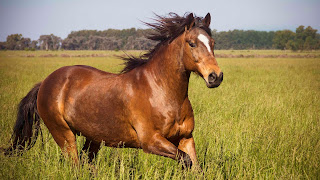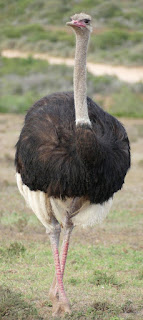Horse

Horse COMMON NAME: Horse SCIENTIFIC NAME: Equus ferus caballus TYPE: Mammals DIET: Herbivore SIZE: Height at the shoulders: 30 to 69 inches WEIGHT: 120 to 2,200 pounds Horses and humans have an ancient relationship. Asian nomads probably domesticated the first horses some 4,000 years ago, and the animals remained essential to many human societies until the advent of the engine. Horses still hold a place of honor in many cultures, often linked to heroic exploits in war. Wild and Domesticated There is only one species of domestic horse, but around 400 different breeds that specialize in everything from pulling wagons to racing. All horses are grazers. While most horses are domestic, others remain wild. Feral horses are the descendents of once-tame animals that have run free for generations. Groups of such horses can be found in many places around the world. Free-roaming Nor...





